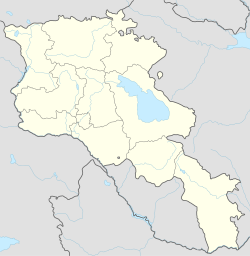CBD-DMH
CBD-DMH | |
| 식별자 | |
|---|---|
| |
| CAS 번호 |
|
| 펍켐 CID | |
| 켐스파이더 | |
| CompTox 대시보드 (EPA) | |
| 화학 및 물리적 데이터 | |
| 공식 | C25H38O2 |
| 어금질량 | 370.57 g·190−1 |
| 3D 모델(JSmol) | |
| |
| |
칸나비디돌-디메틸헵틸(Cannabidiol-dimethylheptyl, CBD-DMH 또는 DMH-CBD)은 칸나비디올의 합성 호몰로뉴로, 펜틸 체인이 디메틸헵틸 체인으로 대체된 곳이다. 이 화합물의 몇 개의 등사체가 알려져 있다. 연구에 가장 많이 사용되는 이소머는 천연 카나비디올과 동일한 입체화학성을 가진 (----CBD-DMH)과 1,1-디메틸헵틸 사이드 체인을 갖고 있다. 이 화합물은 정신적으로 작용하지 않고 주로 아난다미드 재흡수 억제제로 작용하지만 항경련제로서 캐나비디올보다 더 강력하며 항염증과 거의 같은 효능을 가지고 있다.[1][2][3][4] 뜻밖에도 카나비디올의 입체화학성을 역전시킨 '비자연적' 에나토머(+---CBD-DMH)는 CB에서1 17.4nM, CB에서2 211nM의 K를i 갖는 직접 작용 카나비노이드 수용체 작용제로서 7-OH 유도체처럼 동물 연구에서 전형적인 카나비노이드 효과를 내는 것으로 밝혀졌다.[5][6]
또 다른 밀접하게 유사한 화합물도 설명되어 있는데, 사이클로헥세네 링의 이중 결합이 2,3 포화체(즉 파라헥실 같은 합성 THC 유추와 유사함), 이소프로필에 포화된 이소프로페닐 그룹, 그리고 1,2-디메틸헵틸 사이드 체인이 아닌 1,6 포화상태로 전환되었다. 카나비디올의 1,2-디메틸헵틸 아날로그에서 버치 축소에 의해 합성된다. 이 화합물은 동물에서도 강력한 카나비노이드 같은 효과를 내지만 3개의 치랄중추를 가지고 있으며 개별적으로 연구되지 않은 8개의 스테레오이오머가 혼합되어 있어 어떤 스테레오이오머가 활동하는지 알 수 없다.[7][8]
참고 항목
- 7-OH-CBD
- 비정상 칸나비디올
- 카나비노이드 수용체
- 카나비디포롤
- HU-211
- HUF-101
- KLS-13019
- O-1871년
- O-1918년
- NESS-040C5
- 테트라하이드로카나비포롤
참조
- ^ Leite JR, Carlini EA, Lander N, Mechoulam R (1982). "Anticonvulsant effects of the (-) and (+)isomers of cannabidiol and their dimethylheptyl homologs". Pharmacology. 24 (3): 141–6. doi:10.1159/000137588. PMID 7071126.
- ^ Bisogno T, Hanus L, De Petrocellis L, Tchilibon S, Ponde DE, Brandi I, et al. (October 2001). "Molecular targets for cannabidiol and its synthetic analogues: effect on vanilloid VR1 receptors and on the cellular uptake and enzymatic hydrolysis of anandamide". British Journal of Pharmacology. 134 (4): 845–52. doi:10.1038/sj.bjp.0704327. PMC 1573017. PMID 11606325.
- ^ Ben-Shabat S, Hanus LO, Katzavian G, Gallily R (February 2006). "New cannabidiol derivatives: synthesis, binding to cannabinoid receptor, and evaluation of their antiinflammatory activity". Journal of Medicinal Chemistry. 49 (3): 1113–7. doi:10.1021/jm050709m. PMID 16451075.
- ^ Juknat A, Kozela E, Kaushansky N, Mechoulam R, Vogel Z (May 2016). "Anti-inflammatory effects of the cannabidiol derivative dimethylheptyl-cannabidiol - studies in BV-2 microglia and encephalitogenic T cells". Journal of Basic and Clinical Physiology and Pharmacology. 27 (3): 289–96. doi:10.1515/jbcpp-2015-0071. PMID 26540221.
- ^ Hanus LO, Tchilibon S, Ponde DE, Breuer A, Fride E, Mechoulam R (March 2005). "Enantiomeric cannabidiol derivatives: synthesis and binding to cannabinoid receptors". Organic & Biomolecular Chemistry. 3 (6): 1116–23. doi:10.1039/B416943C. PMID 15750656.
- ^ Fride E, Ponde D, Breuer A, Hanus L (June 2005). "Peripheral, but not central effects of cannabidiol derivatives: mediation by CB(1) and unidentified receptors". Neuropharmacology. 48 (8): 1117–29. doi:10.1016/j.neuropharm.2005.01.023. PMID 15910887. S2CID 16531395.
- ^ Razdan RK, Pars HG, Thompson WR, Granchelli FE (1974). "Lithium-ammonia reduction of tetrahydrocannabinols". Tetrahedron Letters. 15 (49–50): 4315–4318. doi:10.1016/S0040-4039(01)92152-5.
- ^ Razdan RK (1981). "The Total Synthesis of Cannabinoids". In Apsimon J (ed.). The Total Synthesis of Natural Products. Wiley Interscience. p. 245. ISBN 978-0-471-05460-3. OCLC 19487018.





